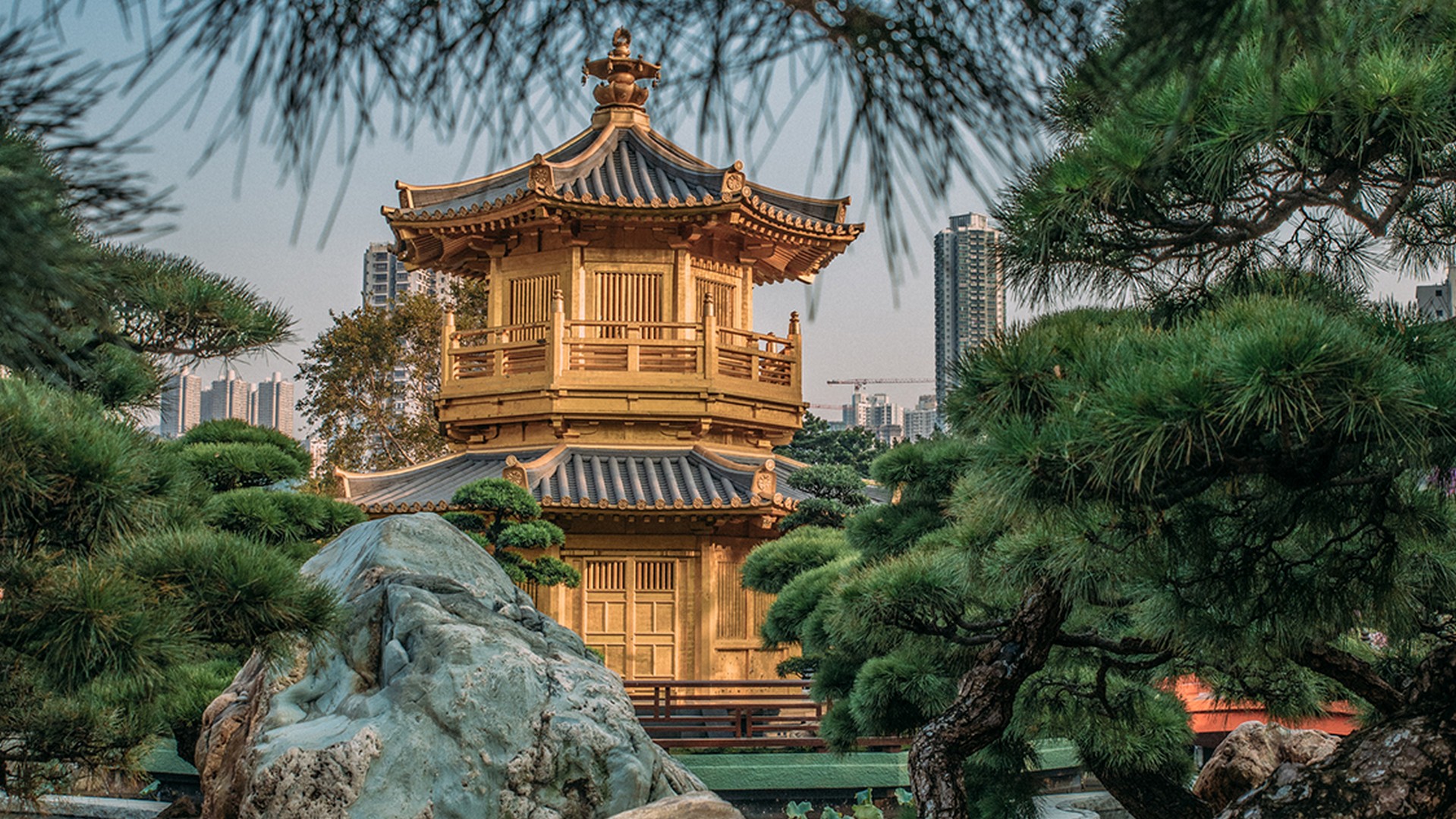
Hong Kong is home to countless temples and each is unique in its own way. Whether you want to marvel at the city’s largest Buddha statue, immerse yourself in local spiritual traditions or simply find some inner peace, these are some of the best temples to explore in the city.

The Big Buddha
If you want to see one of the largest outdoor seated Buddha statues in the world, then head out to Po Lin Monastery
{{title}} Address {{address}} Website {{website}} More info on Lantau Island. Measuring 34 metres high and sitting at the end of a 268-step hike, the famed Tian Tan Buddha looks over the renowned Buddhist temple, which houses a fascinating array of relics, ornaments and structures, including The Grand Hall of Ten Thousand Buddhas. Perfect as a daytrip destination, the monastery also boasts a vegetarian restaurant and is within walking distance from Ngong Ping Village, where you’ll find plenty of shops and tourist attractions.

Sha Tin Che Kung Temple
This structure is one of two temples in Hong Kong built in honour of Che Kung — a general from the Southern Song dynasty (1127–1279) who was greatly revered for his loyalty and courage. Sha Tin Che Kung Temple
{{title}} Address {{address}} Website {{website}} More info traces its origins back to the Ming dynasty (1368–1644) but has since been renovated and reconstructed to accommodate an ever-growing number of worshippers. During the second day of the Lunar New Year, locals flock to this site of worship to pay their respects to Che Kung and pray for luck and protection for the months ahead.

Photo Credit : Calvin Sit
Chi Lin Nunnery and Nan Lian Garden
An unlikely oasis right in the heart of the city, Chi Lin Nunnery
{{title}} Address {{address}} Website {{website}} More info is not only one of the city’s most important Buddhist sanctums but is also regarded as an impressive architectural feat. Reflecting traditional Tang dynasty (618–907) aesthetics and design techniques, the complex is the first in Hong Kong to be constructed without the use of a single nail. Aside from exploring the nunnery, be sure to visit its neighbouring Nan Lian Garden, a beautifully landscaped park that features several permanent exhibitions and even a vegetarian restaurant that’s housed beneath a manmade waterfall.

Hau Wong Temple
This Declared Monument, Hau Wong Temple
{{title}} Address {{address}} Website {{website}} More info was originally erected in the 1700s and was frequented by the Chinese military in the days when the Kowloon Walled City still stood. As such, it is one of the few places in town where you can find rare artefacts from the once-notorious garrison-city, including an incense burner, which was donated in 1847, and stone inscriptions that are also more than a century old.

Man Mo Temple
Arguably one of the best-known temples in Hong Kong, this Declared Monument is the largest shrine built in honour of the God of Literature (Man Cheong) and the God of War (Mo Tai). Inside the temple
{{title}} Address {{address}} Website {{website}} More info , coils of incense hang against a brilliant backdrop of red and gold, creating a surreal spiritual atmosphere that is sure to impress even non-believers. Adjacent to the temple, you’ll also find Lit Shing Kung, where other deities are worshipped, and Kung Sor, which was once used as an assembly hall for the local community.

Wong Tai Sin Temple
Home to three religions — Buddhism, Taoism and Confucianism — Wong Tai Sin Temple
{{title}} Address {{address}} Website {{website}} More info is most famous for its supposed ability to make its worshippers’ requests come true. It’s also known for its Chinese architectural features, which include ornate shrines and pavilions as well as a beautiful garden. During the Lunar New Year, the temple becomes a gathering point for locals who arrive in droves to offer incense to the deities and check their fortunes via a practice known as kau chim.

Tin Hau Temple at Causeway Bay
One of many shrines in the city dedicated to the empress of heaven and goddess of the sea, Tin Hau Temple
{{title}} Address {{address}} Website {{website}} More info , Causeway Bay was built in the 18th century by the Tai clan, who still manages the temple to this day. Aside from its impressive exterior design, the temple stands out for the number of historical relics housed within, including a bell that was cast in 1747.

Hung Shing Temple at Wan Chai
This Grade I Historic Building stands as an example of the city’s local folk religions as well as its legacy of land reclamation. Dedicated to Hung Shing, who is believed to provide protection for fishermen and traders at sea, the one-hall temple
{{title}} Address {{address}} Website {{website}} More info was originally built on the shoreline in the mid-1800s but has since been pushed inland due to land developments across the years.

Hung Shing Temple at Ap Lei Chau
Like the Wan Chai temple that shares its name, this ancient site of worship
{{title}} Address {{address}} Website {{website}} More info in Ap Lei Chau was erected in honour of Hung Shing, who is also known as the god of the South Sea. Thought to date back more than 240 years, it’s one of the few temples in the city that still sits in its original location on the shoreline. During the Hung Shing Festival on the 13th of the second lunar month, the temple comes alive with a giant celebration that involves parades and performances.





 Live Chat
Live Chat









